What is Merchandise Planning? Best Practices & Tools For Scaling Retailers

Proper merchandise planning helps online and retail stores meet customer needs, offer smooth shopping experiences, and boost ecommerce and retail sales.
It optimizes how you buy, store, and sell goods, and with the current global supply chain crisis affecting product prices and availability, it’s more important than ever.
The pressure’s on, but we’ll relieve some of that weight by showing you how to plan your merchandise effectively.
In this article, we’ll cover:
- What merchandise planning is
- Online vs physical merchandise planning
- Why merchandise planning is important
- Merchandise planning challenges
- How to engage merchandise planning correctly
- Merchandise planning tools
#cta-visual-pb#<cta-title>Manage your merch on a stunning virtual storefront<cta-title>Use Shogun to build out the pages you need to display your merchandise.Start building for free
What is merchandise planning?
Merchandise planning focuses on how you select, purchase, manage, display, and price products.
The aim of merchandise planners is to keep up with customer demand, nurture satisfaction, and achieve the highest gains.
Imagine a shopper wants a particular item that comes in a specific type, and they discover it’s available upon visiting your store—this produces a seamless shopping experience that, in turn, yields positive results for your business.
Merchandise planning answers the questions:
- What items will we stock this season?
- How many units should we order?
- When should we place our orders?
- Where will we store our inventory?
- How many units should be in each location?
- What configurations should we offer for our products?
However, merchandise planning is more complex than it sounds and involves multiple components you must fine-tune to realize success (more on that below).
Online vs physical store merchandise planning

Merchandise planning and its components have notable differences depending on whether you apply them to online or physical stores.
These types of merchandising are similar in core ways but differ when it comes to logistics and implementation.
Below, we’ll walk through the different components of a strong merchandise strategy, as well as the differences between retail and ecommerce strategies.
Inventory management
Inventory management is a core facet of proper merchandise planning.
You need to ensure you have enough units in stock per SKU to balance demand, seasonality, and aging inventory.
Your efforts will revolve around making the right products available at the right time and place while avoiding stocking up excessively.
Some questions to ask yourself are:
- Do we have enough stock to last until our next scheduled repurchase?
- Am I offering a healthy assortment of goods and prices?
- Am I properly monitoring inventory inflow and outflow and reducing availability issues?
- Do I have enough space in my fulfillment center or stores for more items?
- Did I order the right amount of products?
By addressing these concerns, consumers won’t need to look beyond your store for the items they want. It’ll also keep your business operations moving smoothly.
In ecommerce, you monitor what inventory is available in your fulfillment or distribution centers, then track the inflow and outflow of goods from there.
Brick-and-mortar locations, however, have the added responsibility of considering what’s displayed and what’s available in your on-site storage, making retail merchandising a bit more complex.
Fulfillment strategy
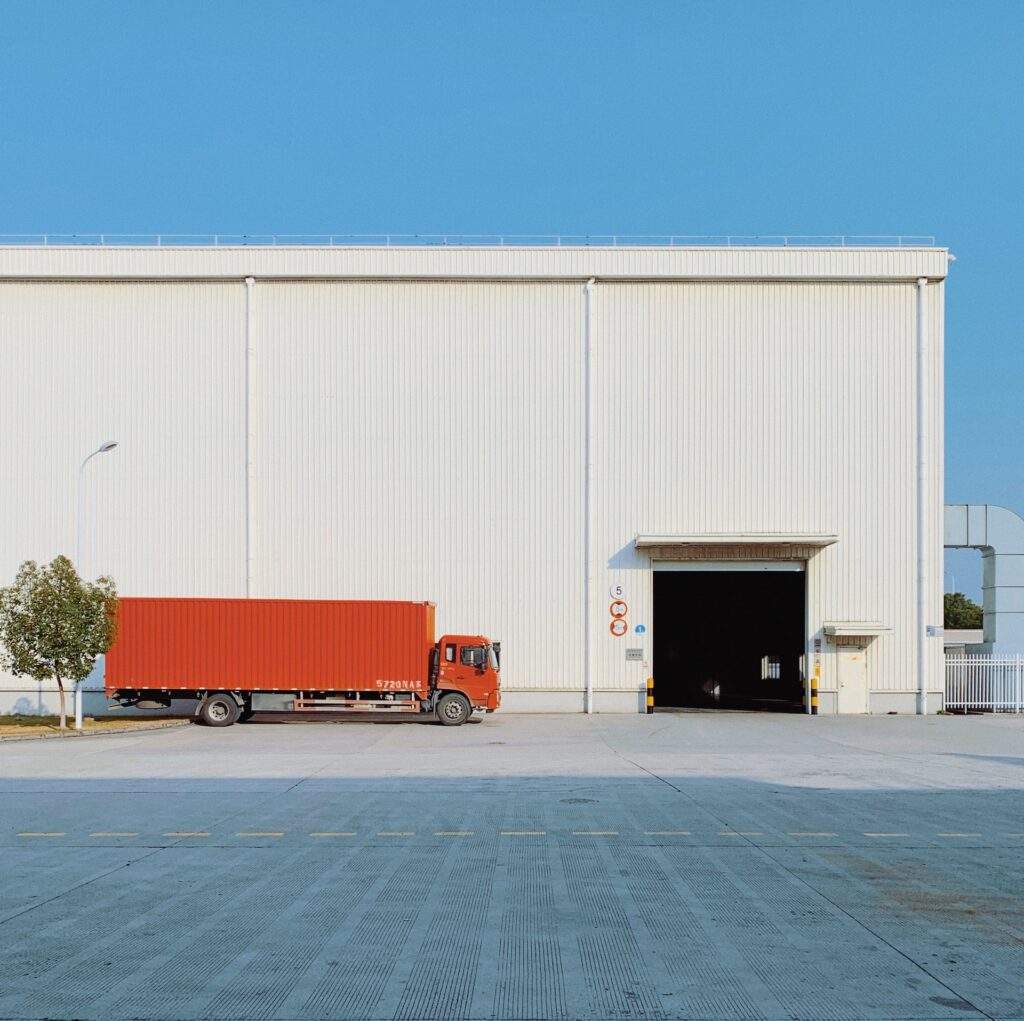
A key issue to watch out for is lead time, which is how long it takes for inventory shipments to arrive.
This window can heavily influence your replenishment schedule and dictate whether you can fulfill customer orders.
So, if product X delivery takes Y days, you’ll have to place your order once inventory hits Z levels. Fail to do so, and you’ll run out of goods and be unable to serve shoppers, forcing them to look elsewhere.
Your fulfillment center or brick-and-mortar store’s storage space also factors into this time frame, as they limit how much you can order.
Your setup also determines how you fulfill orders.
With ecommerce, it depends on product availability, which is affected by consumer demand and lead times.
Retail stores have more to worry about, including the transport of inventory from suppliers to distribution hubs and then brick-and-mortar locations.
Companies with both online and offline channels, meanwhile, might fulfill orders through physical retail, which impacts their in-store inventory.
Analytics and forecasting
Gauging your performance through analytics and forecasting demand is also imperative.
Study your sales data and individual product revenue from the previous season, as well as your week-to-week performance.
Your goal is to anticipate consumer behavior, potential sales, and the amount of inventory you’ll need at specific times.
Your data for online and physical channels will also differ since what consumers shop for online may be dissimilar to what sells well offline.
Take, for example, people who prefer to test products like electronics in person.
Visiting a retail store and completing the purchase themselves may be more common in that niche, so your numbers and projections will diverge from what you observe online.
Product display vs optimization

Product display focuses on making products visible and attractive for customers, as well as grouping or categorizing items appropriately to improve accessibility.
Product optimization, however, enhances product listings, so they’re more appealing.
It’s a more common practice online, and with countless options now available to consumers, it’s a key element that helps your brand stand out.
In brick-and-mortar stores, product display requires fixtures, lights, hangers, and other props and equipment.
It also entails creating a layout that produces an intuitive in-store experience.
For ecommerce product display, shoppers heavily rely on high-quality images, videos, and descriptions. Additionally, your catalog must be well organized for easy online browsing.
Invest in intuitive and personalized product pages, collection pages, and other web pages designed to drive conversions. This helps you display your merchandise optimally, push strategic SKUs, and leverage your in-stock items.
How you display products and upsell customers also differs online, including nudging shoppers toward subscriptions and offering product bundles.
#cta-mini-pb#Display your products seamlessly with Page Builder. Learn more
Demand management
You should build your demand management strategy around keeping item levels at optimum counts based on your merchandising strategy.
This can refer to how you bundle and sell different SKUs and units, how visible you make your best-selling products (especially when they’re low on inventory), and how prominently you push items that you want to sell first.
Both online and in retail stores may, for example, bundle popular items with new products to introduce them to your core customers.
A strategy specifically for ecommerce stores could feature setting up your related product suggestions to display items you want to push to make room for other merchandise.
In retail stores, this might look like displaying items that pair well together on the shop floor or having items you want to push near your checkout lines.
Carefully consider how you want to balance demand generation with inventory levels and plan for it in your merchandising strategy.
Accounting for seasonality
Brands have staple products they constantly stock and sell throughout the year.
Seasonal products, meanwhile, are in-demand goods sold during specific periods and incorporated into your inventory before those time frames start.
Think of winter clothing as an example, where sufficient levels need to be maintained throughout the cold months while avoiding stockouts and overstocking.
Account for trendy items that arise from current events or pop culture as well. They sell like wildfire but also fizzle out quickly, so handle them with caution.
Seasonality can look similar for ecommerce and physical stores, where you maintain a healthy amount of items pre-season through the end of the specific time period.
The biggest difference is what trends or goes viral for each portal.
In these instances, you can stock up on related products for online sales and leave your offline channel untouched, or vice versa.
The importance of intelligent merchandise planning
Now that you have an understanding of the key components, let’s take a look at the benefits of a solid merchandising plan.
Spend wisely
Poorly planned merchandising results in wrong purchases that incur extra costs.
If you order items that don’t align with the season or consumer demand, you’re stuck with unsellable inventory, and it’s your responsibility to get rid of it with minimal losses.
Avoid overstocking
Ordering incorrect merchandise also affects your future purchasing capabilities.
Wrong products eat up space in your fulfillment centers and physical stores, making it difficult to order goods you can move regularly.
It also contributes to losses, costing retailers up to $1 trillion yearly.
Keep up with consumer demand
By ordering the right product varieties and quantities, you can easily meet customer demands and streamline your operations.
Stocking up incorrectly hinders those efforts, reduces product availability, and discourages customers from returning to your store.
Maximize sales
Inferior merchandise planning can turn customers away and lead to lost sales. If customers can’t find the item they want through you, they’ll simply look elsewhere.
Leaving with a negative impression of your store will push them to your competitors and eliminate the possibility of return purchases.
Create excellent buyer experiences
Visual merchandising design helps to craft delightful buyer experiences that make it intuitive for shoppers to find what they need, showcase your products in their best light, and ensure available stock—whether online or in-store.
Merchandise planning challenges
Despite its benefits, merchandise planning presents some challenges that retailers should be aware of as they scale.
Lack of reliable historical data, especially in turbulent years
Historical data can cause issues when you blindly rely on it.
Numbers aren’t everything, and many factors influence them; economic climates and market trends can impact consumer behaviors, for instance, and affect the sourcing of goods as well.
- Your data throughout the COVID-19 pandemic, for example, likely fluctuated significantly. Your performance may have been awful during its peak but then improved as restrictions were lifted.
- Meanwhile, the global supply chain crisis it brought about also made it more difficult and expensive to acquire goods.
Maintaining the right products and quantities
Finding an ideal variety of items that customers will purchase consistently is difficult, as well as keeping the right amount in stock.
They may sell regularly now, but that could change in the future.
It’s imperative to understand optimal inventory levels for given periods of time and to achieve that end, you’ll have to capitalize on analytics and forecast demand.
Balancing online and offline channels
Physical stores and online channels operate differently because their consumers have unique behaviors.
To manage both, you’ll have to adopt an omnichannel strategy based on your expected sales for each channel and adjust your merchandise plan per channel.
This also helps you retain customers.
In fact, businesses that embrace an omnichannel approach see 90% higher annual customer retention rates than those that don’t.
Differences in merchandising needs for global markets
Markets across the globe also differ from one another, having their own seasons, cultures, demographics, politics, and economics.
Be aware your domestic merchandising plan may not work around the world, so you need to adjust your strategy accordingly, tailoring it to each international market where you sell.
#cta-visual-pb#<cta-title>Use Shogun to sell across markets<cta-title>Shogun Page Builder works seamlessly with Shopify to create branded stores for different markets.Start building for free
How to approach merchandise planning for the best results
Having dipped into its upsides and drawbacks, now it’s time to look at how you can approach merchandise planning at three different stages.
Analyze your previous seasons
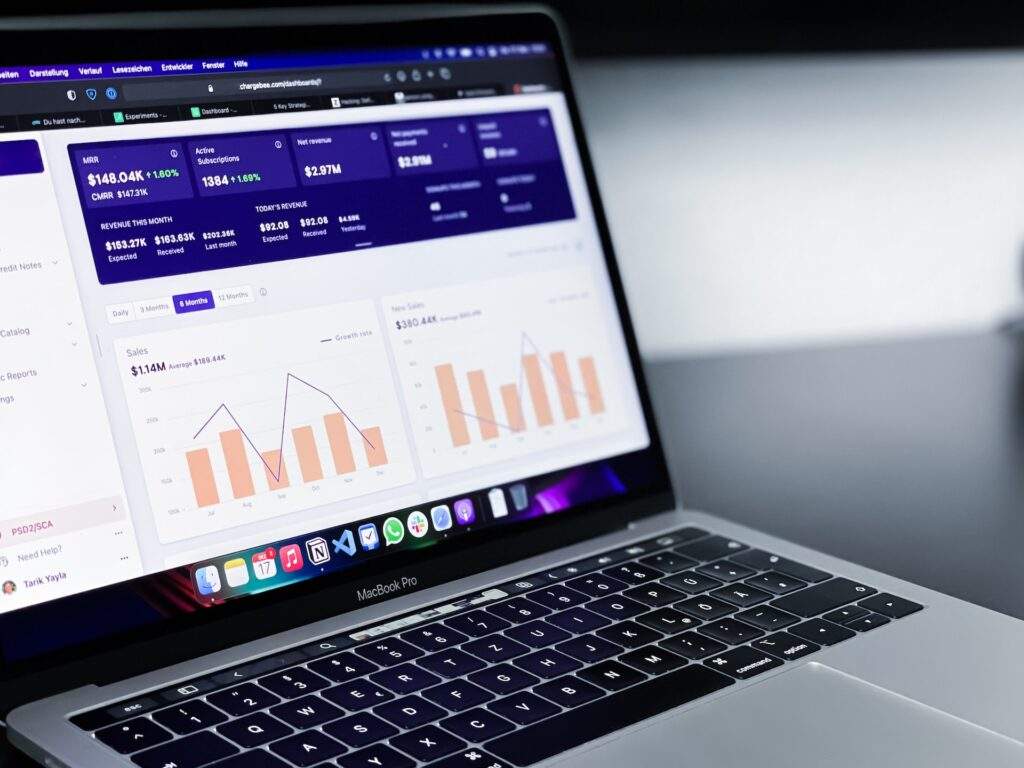
Before you start merchandise planning, gather the data that’s already at your fingertips.
Looking at the inventory levels and order volumes of past seasons can show you sales trends and what to expect next.
For online stores
Besides reviewing each product’s performance, look for other contributing factors. For example:
- Did you launch any social media campaigns for specific products?
- Were sales from direct website visitors or those who landed through ads or search engines?
- If sales spiked, was inventory sufficient? Or did it run out due to slow shipments?
- Did you overstock anything?
- Have you A/B tested your conversion elements, such as CTA color and featured image?
Typical metrics like profit margins and return on investment (ROI) have significant influence, but accounting for external forces matters as well.
For retail stores
If you have physical stores, ask yourself:
- Were there any significant events—like holiday sales—that boosted a product’s in-store demand?
- Did my store layout or displays heavily affect the purchasing decisions of in-store shoppers?
- Did any less-visible products sell better than those placed in plain sight?
- Were there instances where product availability was compromised?
Grasping these insights helps you identify product behaviors in a brick-and-mortar setting and aids in preparing for the next season.
For hybrid stores
Besides the above factors, those with hybrid setups will have to look at nuances that exist when balancing online and offline channels.
Buy Online, Pick Up In-Store (BOPIS) purchases, for example, can count as an online sale, but they affect your brick-and-mortar inventory.
You’ll have to dig through your data, identify such instances, and determine how often they occur.
Adjust and improve during your current season

You should periodically analyze order volumes, inventory, fulfillment performance, reverse logistics, and other aspects of your merchandise planning to ensure operations are optimized and working smoothly.
For online stores
Review your products’ individual performance weekly and optimize your online displays.
If what you currently have appears less than optimal—such as certain high-demand goods having long lead times, thus impacting availability and frustrating customers—you need to make some changes to your merchandise planning.
Likewise, you should always be testing your product pages to find a top-converting mix.
Just like retail stores regularly update their window displays, you can continue to tweak and refine your store pages to achieve the best customer experience.
For retail stores
In-store shopping offers opportunities to extract information from your customers.
Let’s say you learn you’re their first choice for specific items that are typically sold out for a while thanks to long lead times.
In that case, you’ll want to place larger orders or find an extra source for that product.
You can gather feedback about your displays and layouts as well. This helps you tweak the in-store customer experience, transforming it into the ideal visit for shoppers.
For hybrid stores
Actively monitoring both channels is ideal for making alterations mid-season, so try to identify challenges that prevent online and offline channels from meshing properly.
For instance, are offline channels also fulfilling ecommerce orders for specific products, thus draining inventory from your physical stores?
If so, you’ll want to adjust the number of goods you allocate for your brick-and-mortar locations.
Plan for your future seasons
In addition to checking on your merchandise planning performance periodically, you should also plan ahead for future seasons.
Think about which products you want to keep, add, or remove, the fulfillment processes that work well, and what you want to improve or avoid next season.
For online stores
Identify staple products you can carry over.
You’ll want to keep them in stock, then incorporate the ideal amount of high-demand seasonal products to maintain consistent performance.
Determine any issues that arose during the previous season as well.
For example, if you noticed a low-performing product sitting in your distribution center, create a plan to get rid of it, like discounting the price, and free up space for in-season goods.
Carry over the online conversion elements that worked best.
Build page templates based on your top-performing product pages of the season to iterate in future seasons, driving informed conversion growth.
#cta-mini-pb#Build branded design templates of your top pages. Learn more
For retail stores
Anticipate the next major season and what goods typically move fast or offer the highest yield; these will affect your brick-and-mortar store’s overall makeup.
Let’s say you’re an apparel brand, and summer’s about to transition to fall.
You’ll want to stock fall items in advance and have your future displays and layouts planned and ready to roll out.
For hybrid stores
Craft a plan that aligns both your online and offline channels.
For instance, do the goods you stock up on and plan to sell through both avenues match the season?
Is inventory being ordered and transferred accordingly (i.e., from suppliers to distribution centers, then to physical stores) while maintaining a level that enables consistent availability?
Merchandise planning software to help you build your strategy
With this deeper grasp of merchandise planning, you’re ready to build your own strategy. Below are some recommended tools to help you start.
RELEX
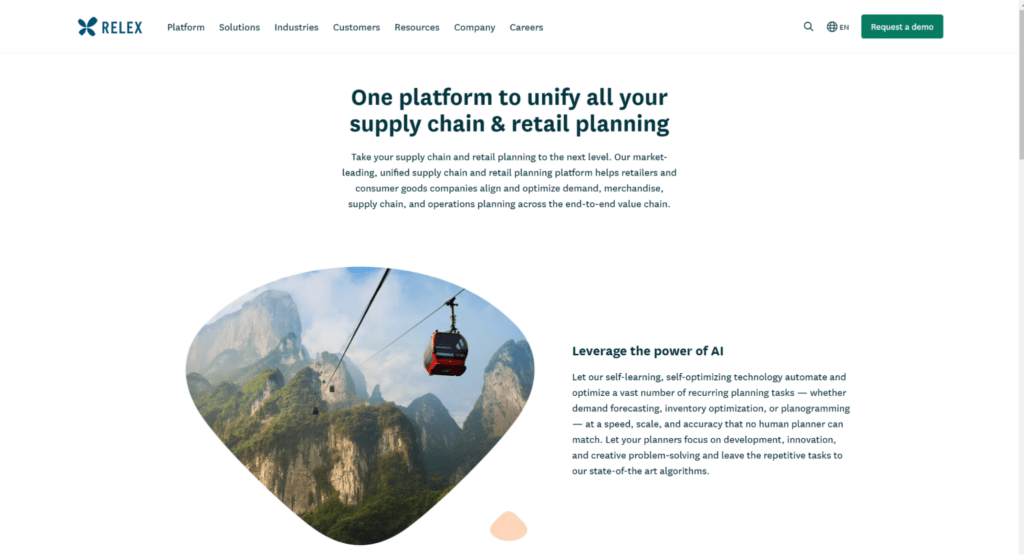
The Relex platform lets you plan your end-to-end inventory and product assortment and anticipate demand.
It even automates replenishment and allocation, streamlines your supply chain, and tackles markdown pricing and clearance optimization.
Additionally, those with physical stores will enjoy its planogram, floor planning, and store execution solutions.
Price: Customized according to business needs, must contact provider
Coveo
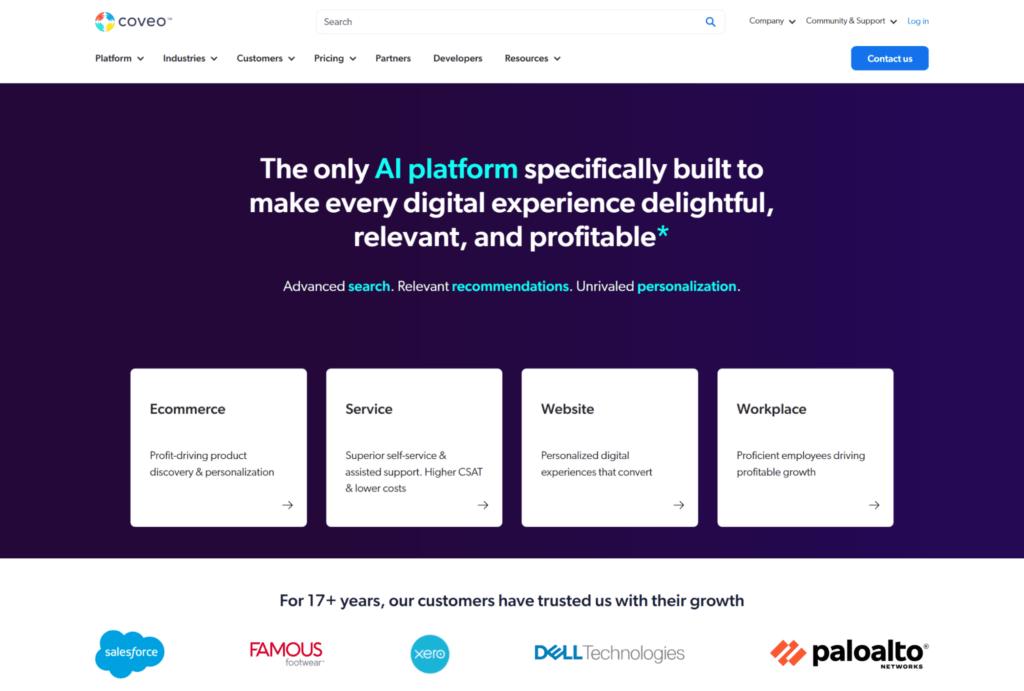
Coveo is an AI-powered search platform that helps ecommerce businesses display the right merchandise at the right time to provide a tailored digital experience for customers.
It leverages personalization to deliver relevant product discoveries and recommendations.
As a bonus, it also integrates with various solutions and delivers analytics about consumer behaviors.
Price: Customized according to business needs, must contact provider
NetSuite
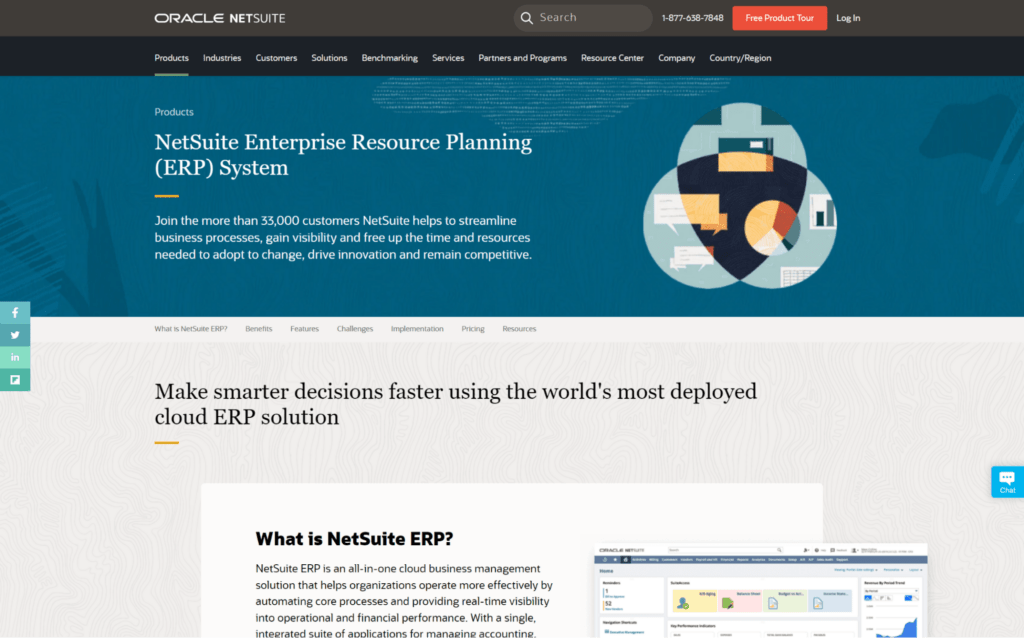
Netsuite’s ERP boasts multiple functionalities that aid in merchandise planning:
- Inventory management features identify reorder points, implement demand-based replenishment, and optimize safety stock.
- Demand planning software employs four methods of forecasting for precise results.
- Supply planning allows you to scrutinize demand, pinpoint replenish requirements, and send out restock orders promptly.
- The warehouse management feature offers real-time inventory updates, showing how much room you have for more products.
Price: Customized according to business needs, must contact provider
Toolio

Toolio provides a platform built specifically for merchandising. It lets you:
- Build financial plans for your merchandise
- Use data and analysis to plan product assortments
- Maintain ideal inventory levels thanks to better visibility and demand planning accuracy
- Seamlessly allocate goods through the automation of transfer orders
Price: Customized according to business needs, must contact provider
Board

Board’s platform seamlessly unifies your merchandise planning efforts through its:
- Assortment planning and category management
- Allocation and replenishment
- Demand forecasting
- Merchandise financial planning
It helps you adopt customer-centric strategies while aligning your merchandising, supply chain, and analytics.
Price: Customized according to business needs, must contact provider
Merchandise planning FAQs
To cap things off, we’ll answer some lingering questions you may still have.
How do I know when to reorder products?
It’s helpful to calculate for your reorder level, which is the point at which inventory must be replenished for smooth business operations.
That threshold minimizes losses and waste by informing you of the right time to order goods and the appropriate amount.
Three factors influence your reorder level:
- Average demand: The amount of a specific item that you sell within a given time frame
- Lead time: How long it takes to receive your inventory shipment
- Safety stock: The quantity of a specific product that’s kept on hand in case of sudden demand spikes or delivery issues; tapped into on a case-by-case basis
First, determine the above, then use the following computation:
Reorder level = average demand x lead time
When using safety stock, it’s:
Average demand x lead time + safety stock
How do I find the right product and variant mix?
Multiple considerations impact the correct product mix, and the best choice might not be what appears most profitable on paper.
Beyond how much you gain per sold item, you’ll want to account for the following:
- Gross profits
- Profit margins
- Whether fulfillment affects customer satisfaction, returns, and retention
- Customer demand for specific items
- How long it takes to produce goods
How can I stay on top of market trends for buying products?
Regularly monitor domestic and international news about your industry. You can also keep yourself up to date by:
- Being active in associations, events, and communities to help you network
- Studying industry and market statistics to identify trends in certain demographics, regions, and the like
- Looking at your direct competitors; since you share similar audiences, what works for them might work for you
- Actively engaging with customers (social platforms like Facebook, Twitter, and Linkedin make this easy and are excellent sources of feedback)
How do I use analytics to inform my purchasing decisions?
First, identify data that points you in the right direction. The following factors, for instance, can play a role in your decision-making:
- The average demand and lead time for specific items
- Your past sales data, broken down into your profits and ROI for each product
- Market trends and customer feedback
- A specific time frame that you want to measure
These can help you gauge how your goods perform seasonally.
Then, organize, analyze, and compare them to historical data to identify nuances that affect your numbers.
Ensure smooth sailing with merchandise planning
Merchandise planning can be tricky to implement at first.
However, once you’ve honed your process, it can result in robust online and offline storefronts, optimized inventory inflow and outflow, and, most importantly, satisfied customers.
Incorporate what we’ve discussed in this article and use the appropriate tools to simplify the process and get in front of market demand.
#cta-visual-pb#<cta-title>Master your merch, master your display<cta-title>Shogun can help you create the best landing pages for every SKU.Start building for free

Rachel Go
Rachel is a remote marketing manager with a background in building scalable content engines. She creates content that wins customers for B2B ecommerce companies like MyFBAPrep, Shogun, and more. In the past, she has scaled organic acquisition efforts for companies like Deliverr and Skubana.



